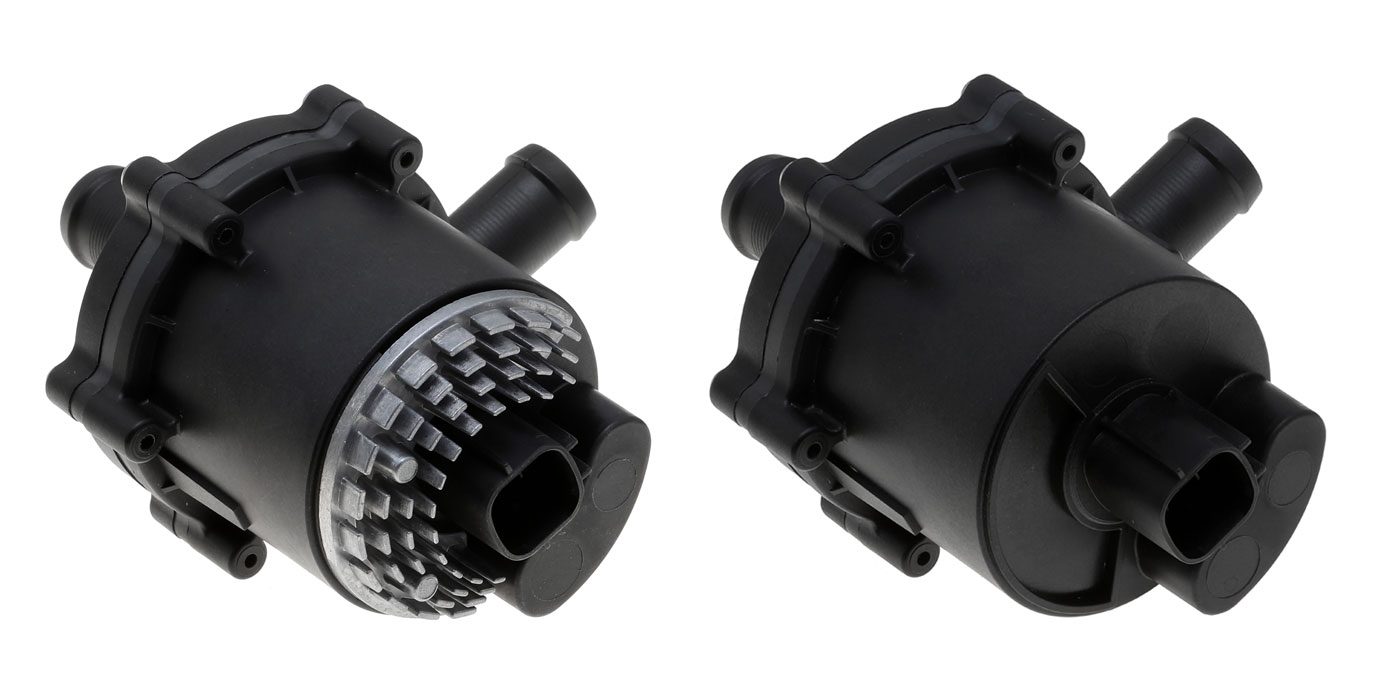Mechanical water pumps are relatively reliable with proper cooling-system maintenance and can last upward of 100,000 miles. The water pump plays a vital role in keeping the vehicle running optimally in all weather conditions. But when they fail, the results can be catastrophic for the engine.
A typical water pump can move about seven gallons of coolant during a driven mile, so add that up to the life of the part – which could be 100,000 miles – and we’re talking big numbers (700,000 gallons or more!).
One type of failure is caused by corrosion inside the cooling system. Other failures can stem from a wobbly fan blade that can cause vibrations or an impeller shaft to bend or break. The impeller also can separate from the shaft, which you won’t find until you remove the pump
(typically after an overheating event).
A bent pulley also can cause similar damage. A fan belt or serpentine belt that has too much tension can overload the shaft bearings. One of the biggest causes of water-pump failure is caused by leaks, either around the shaft or from a worn bearing or a seal. Debris can enter the system and score the shaft seal, creating a leak path.
Because water pumps move such a vast amount of coolant, the bearing wears out over time. You can loosen a belt tensioner to check both the tensioner and water pump. When the belt is loose, you can rotate the pump to feel if it’s smooth or notchy. You also can check the tensioners similarly for smoothness. If you’ve ever used a bearing spinner, you can tell what a good bearing feels like as it rotates.
If you hear a clicking or squeaking noise, it may be a worn bearing that may be heard at idle. A drive belt that’s too loose may make a whining sound, or the sound may be from a bad pulley. It’s rare, but it does happen.
Overheating can be the result of worn belts or tensioners. A loose belt may not allow the pump to rotate as fast as it should, which then causes the engine to overheat.
Cavitation inside the coolant system also can cause damage and leaks. As the gas bubbles vaporize, the suction pressure can pull away at the metal around the shaft. Cavitation creates suction that erodes material from the inside. Signs of cavitation include overheating and leaks around the weep hole of the pump.
With new pumps that don’t cost much more than a reman unit, many parts specialists prefer selling these because you don’t have to handle the core. No exchange core is needed if a customer is buying a new pump.
Most new pumps come with the gasket (but make sure you check before selling it). It’s also a good idea to recommend the proper pre-mixed coolant for the application. And don’t forget about replacing belts and hoses. High-mileage or older vehicles likely are going to need belts, hoses and a thermostat. It’s like making sure you get fries and a drink with your burger.
Another useful add-on sale is thread sealer for some applications. If the water-pump bolts extend into the engine’s water jacket, the bolts must be sealed. The bolts also may need to be replaced if they’re badly corroded or damaged. The important thing to remember is that a strange sound or a small coolant leak shouldn’t be ignored, because it could be something
serious that leaves your customer stranded on the side of the road.













